Your customers want to go faster, asking if you can just "remove the speed limiter." You want to sound helpful, but you know that tampering with factory settings could be a recipe for disaster.
A mobility scooter's speed limiter is not a physical part but a software setting programmed into the electronic controller. While technically possible to alter, removing it makes the scooter unsafe, illegal for public use, and creates a massive liability for you and the user.
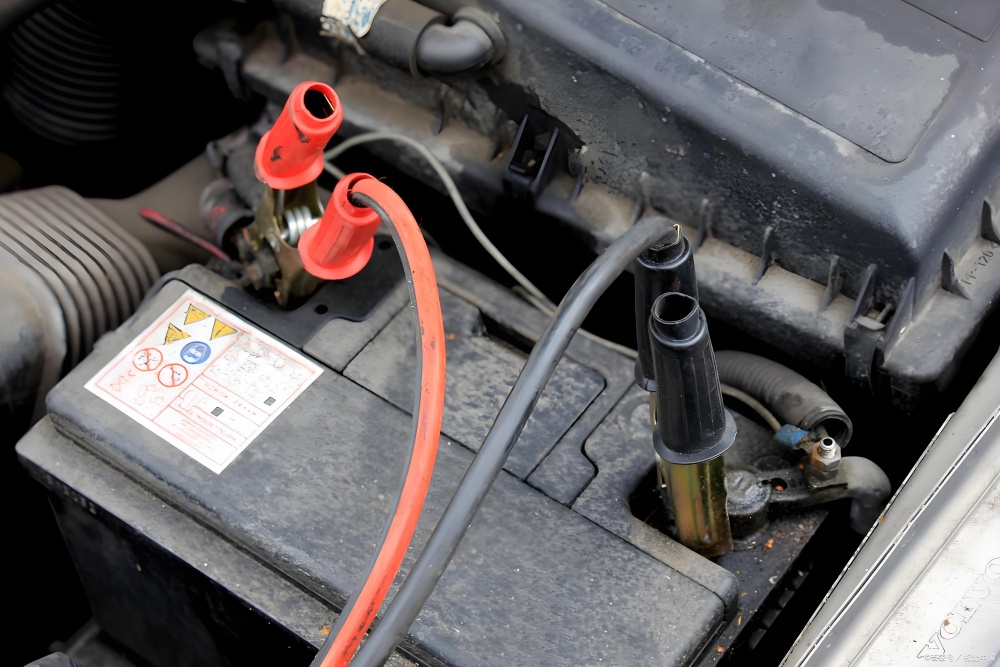
As a manufacturer, we don't install speed limiters to annoy customers. We install them as a core safety and legal feature. The entire scooter, from its frame to its wheels, is designed around that limited speed. To answer your customer's question properly, you need to understand what this limiter is, why it's there, and the serious consequences of trying to bypass it. This knowledge will protect your business and keep your customers safe.
Where is the speed limiter located on most scooters?
You've opened up the scooter's shroud, looking for a chip or wire to unplug. You see the motor, batteries, and a complex controller, but there is no obvious "limiter" to be found.
The speed limiter is a function of the scooter’s electronic controller, which is the vehicle's brain. It's a setting in the software, not a removable physical component. Some models have a small adjustment dial, but it only works within a narrow, pre-set range.
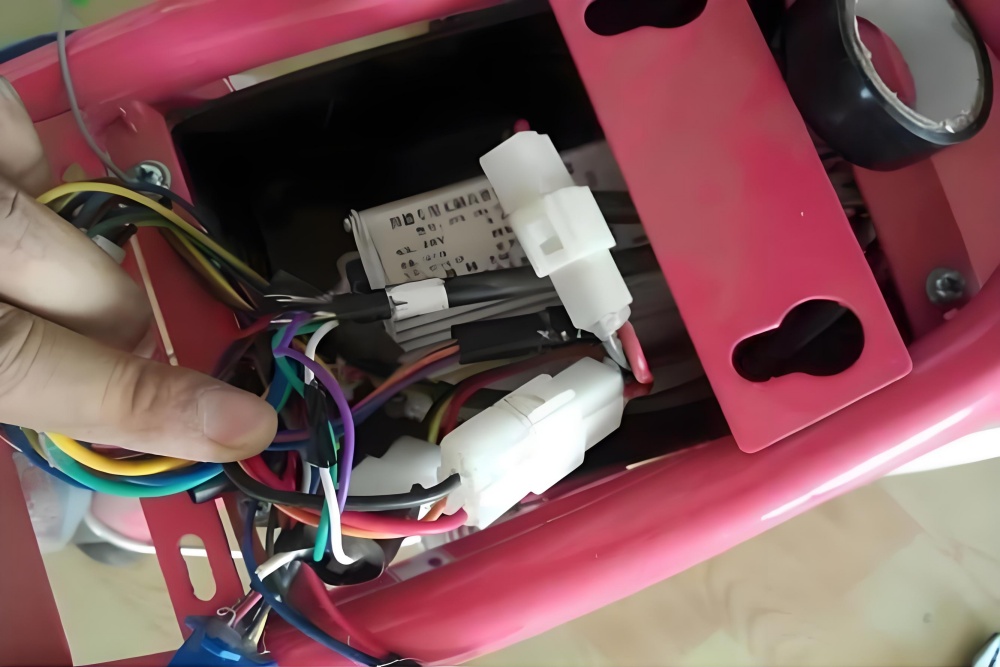
Many people imagine a "speed limiter" is like a governor on a go-kart that you can simply unbolt. In reality, it's far more integrated. The controller is a small computer that manages everything: acceleration, braking, battery usage, and top speed. The top speed limit is programmed directly into its firmware at the factory.
There are two ways this is generally handled:
- Firmware Programming: This is the most common method on modern scooters. The maximum speed is hard-coded into the controller's software. It cannot be changed without proprietary programming tools that only the factory or a certified high-level technician would have.
- Potentiometer (Pot) Dial: Some controllers have a tiny dial on the circuit board itself. This is not a "hack" to unlock more speed. It's a tool for technicians to fine-tune the scooter's performance, for example, to slightly reduce the top speed for a user who needs extra safety, or to ensure it matches the exact legal limit (e.g., setting it to 8 mph instead of 8.5 mph). It does not allow you to double the speed.
Why do manufacturers install speed limiters?
From your customer's point of view, the limiter feels like a frustrating restriction. From your perspective as a seller, it's essential to understand that this feature is the key to the entire product concept.
We install speed limiters for two main reasons: legal compliance, which allows the scooter to be used as a medical device on sidewalks, and physical safety, because the scooter's chassis is not designed to be stable or safe at high speeds.
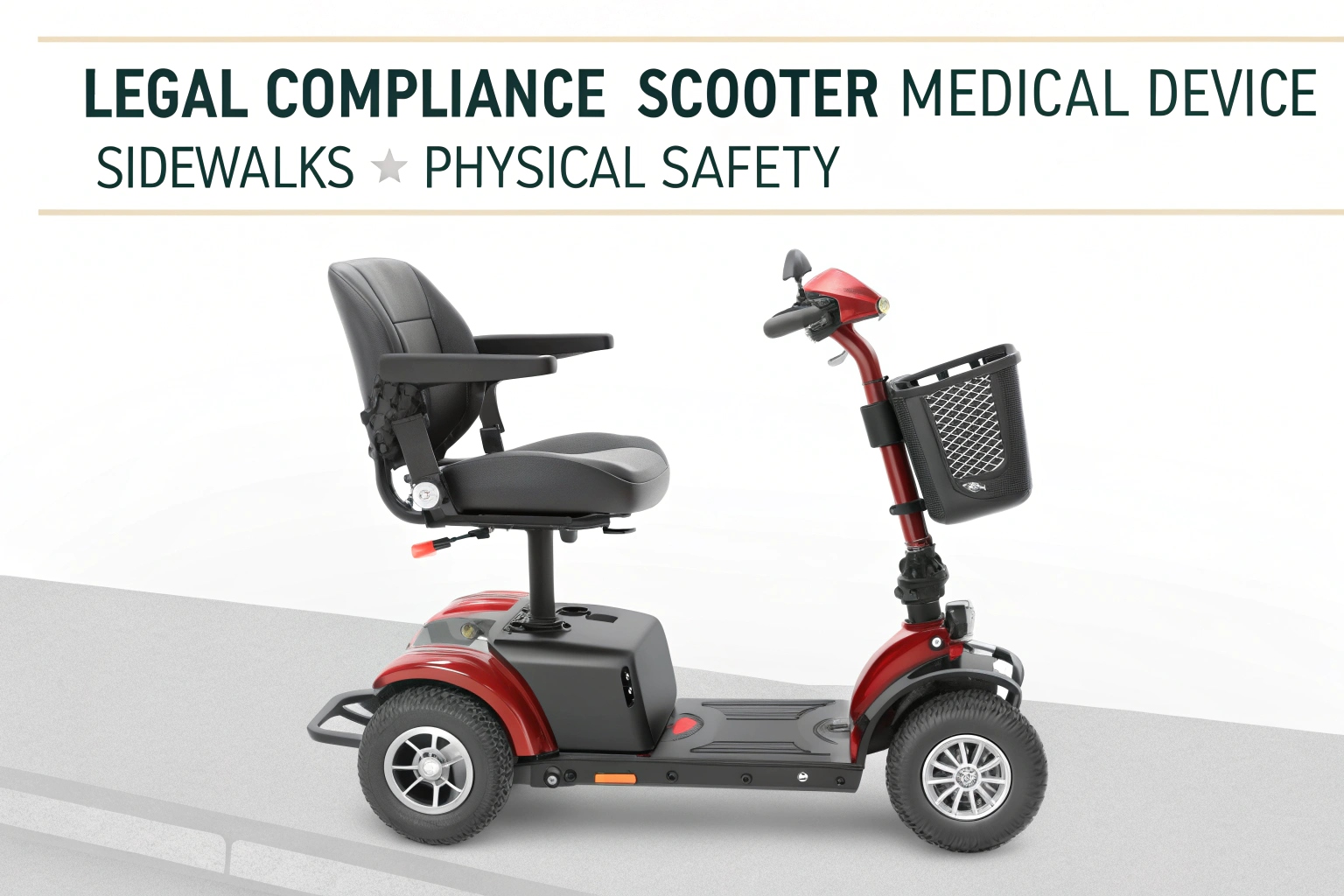
These two reasons are mission-critical for our factory and for your business. Ignoring them is a serious mistake.
- Classificação Legal: In most countries, a vehicle that goes 4-8 mph is a "medical device" or "personal mobility aid." This is what allows it to be used on sidewalks and in public places without a license or registration. If that same vehicle goes 15 mph, it legally becomes an unregistered motor vehicle. The speed limit is the line between a legal medical aid and an illegal road vehicle.
- Physical Safety: My insight as a manufacturer is this: the vehicle itself is built for low speeds. Mobility scooters have a high center of gravity, small wheels, and low ground clearance.
- At 4 mph, hitting a crack in the pavement is a bump.
- At 12 mph, the same crack could cause the small wheel to get stuck, potentially flipping the scooter and causing serious injury.
The brakes, suspension, and steering are all engineered for a maximum speed of around 8 mph. Pushing past that limit makes the entire system unstable and dangerous.
How to disable or remove a scooter’s speed limiter?
A customer insists they can buy a "chip" online or that there must be a wire to cut. You need to give them a practical, honest answer that prevents them from damaging their scooter or hurting themselves.
You cannot simply remove it. Disabling a firmware-based limiter requires factory-level reprogramming equipment. Attempting to bypass it by rewiring the controller or adding an unapproved device will likely cause permanent damage to the scooter's electronics.
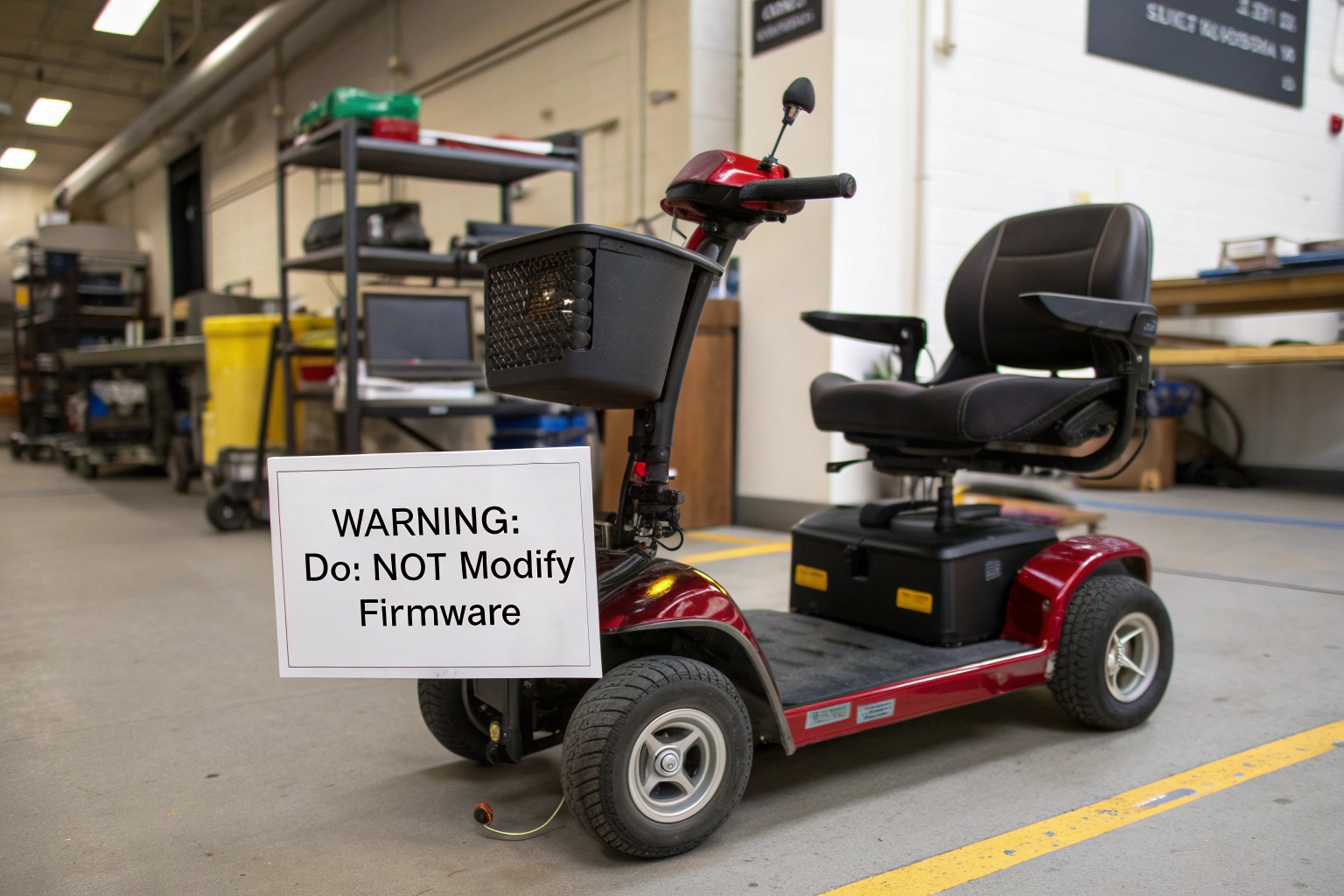
Let's be very clear about the so-called "solutions" people talk about online. They are either misunderstood or incredibly risky.
| Method | Reality & Risk | Recommendation |
|---|---|---|
| "Cutting a Wire" | There is no single "speed limiter wire." Cutting random wires will disable the scooter, create a short circuit, or damage the controller. | Do Not Do |
| "Installing a Chip" | Aftermarket "speed chips" are not a real thing for mobility scooters. These are scams that will likely damage the very sensitive electronics. | Do Not Do |
| Adjusting the Pot Dial | This allows for minor fine-tuning within the safe, factory-set range (e.g., from 8 mph down to 6 mph). It will not unlock a higher top speed. | For Technicians Only |
| Reprogramming Controller | This is the only "real" way but requires proprietary hardware and software from the controller manufacturer. This is a factory-level modification. | Not for Users |
The simple truth is, if you want a scooter that goes 15 mph, you need to buy a vehicle that was designed from the ground up—motor, controller, frame, and brakes—to be a 15 mph vehicle. You cannot safely turn a 4 mph scooter into one.
Is removing the limiter legal or safe in your country?
You've managed to make the scooter faster. Now you face the final, and most critical, question: What have you actually created? Is it a better mobility scooter, or is it a dangerous liability?
No. Removing the speed limiter is neither legal nor safe. It instantly voids the scooter's medical device classification, making it illegal on sidewalks. More importantly, it pushes the physical frame beyond its stability limits, making it dangerously unsafe to ride.
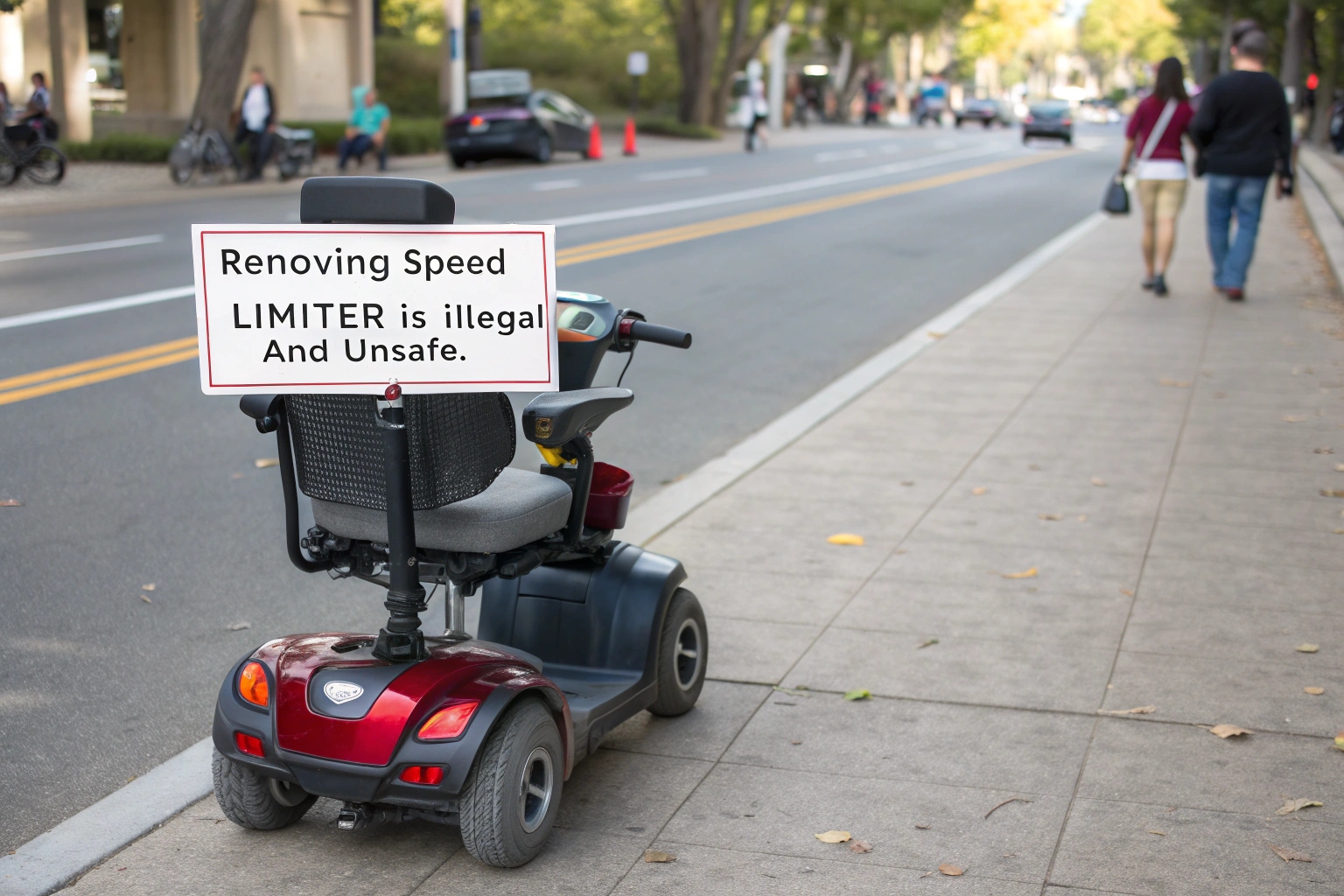
This is the bottom line for any importer or distributor. Modifying a scooter to remove its speed limiter creates unacceptable risks for your business and your customers.
- Legal Risk: The scooter is now an unregistered vehicle. If the user is stopped by law enforcement or gets into an accident, they (and you, the seller/modifier) could face fines and legal action. Any insurance claim would almost certainly be denied.
- Liability Risk: If a customer is injured on a scooter you modified, your business could be held liable for selling an unsafe and uncertified product. This is a risk that is simply not worth taking.
- Safety Risk: As we've discussed, the scooter is not built for speed. The braking system will be inadequate. The high center of gravity makes it prone to tipping in a turn. The small wheels can't handle obstacles at speed. You are creating a recipe for a serious accident, especially for an elderly or disabled user.
Your professional responsibility is to sell a product that is safe and fit for its intended purpose. A mobility scooter with its speed limiter removed fails on both counts.
Conclusão
The speed limiter is a foundational safety and legal system, not a removable part. Bypassing it makes the scooter illegal, unsafe, and a massive business liability. Educate customers on why the limits exist.

